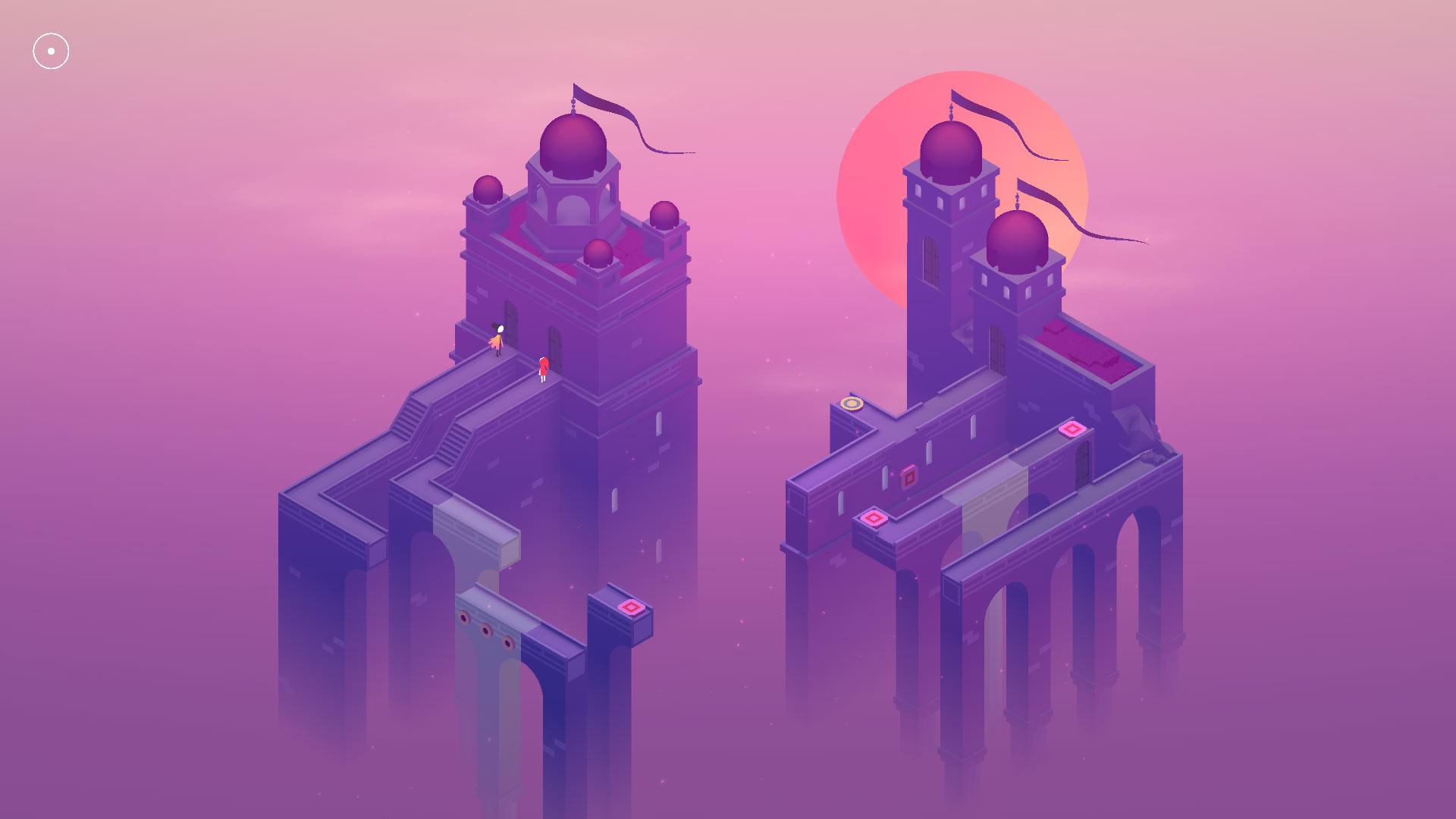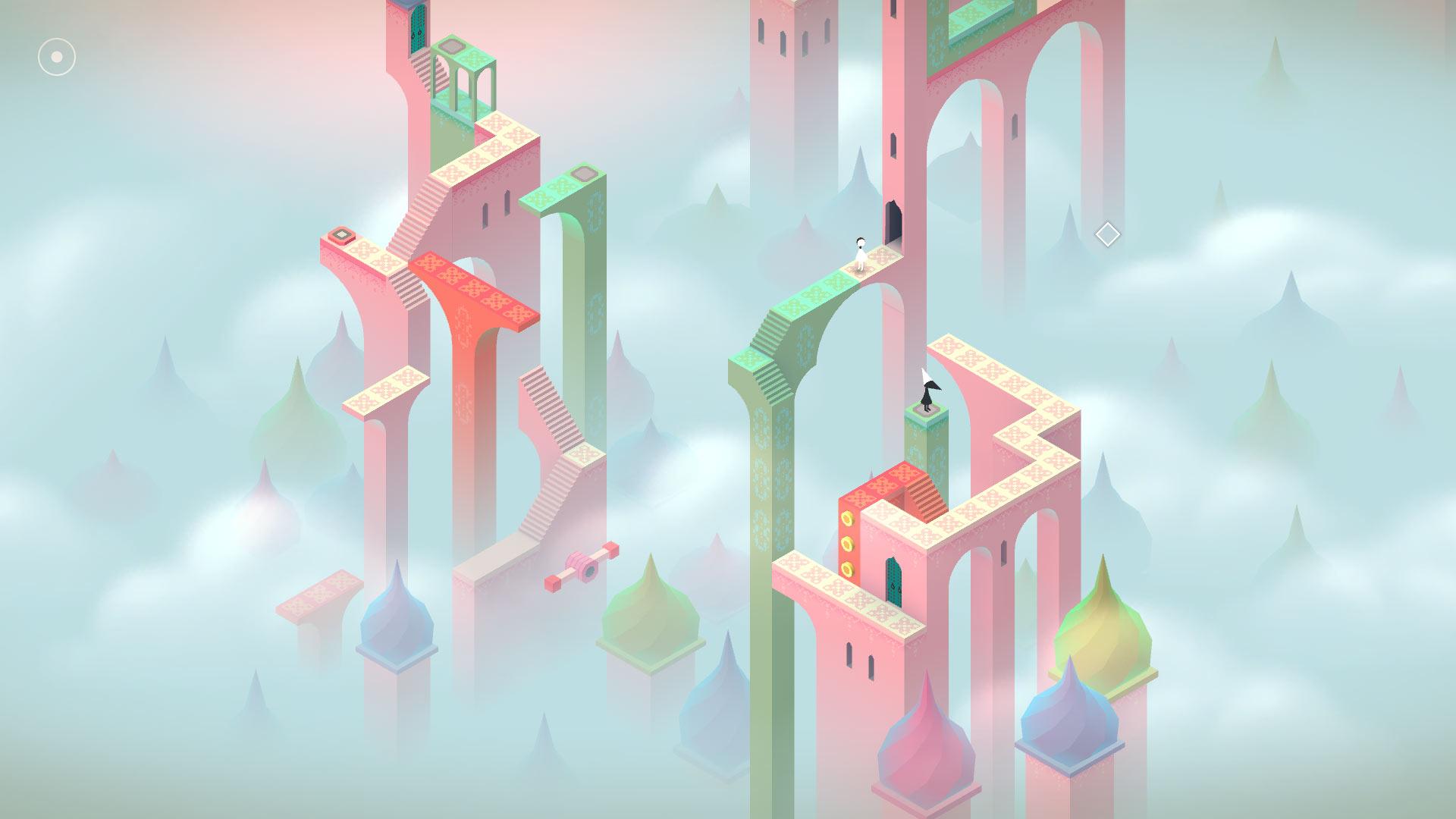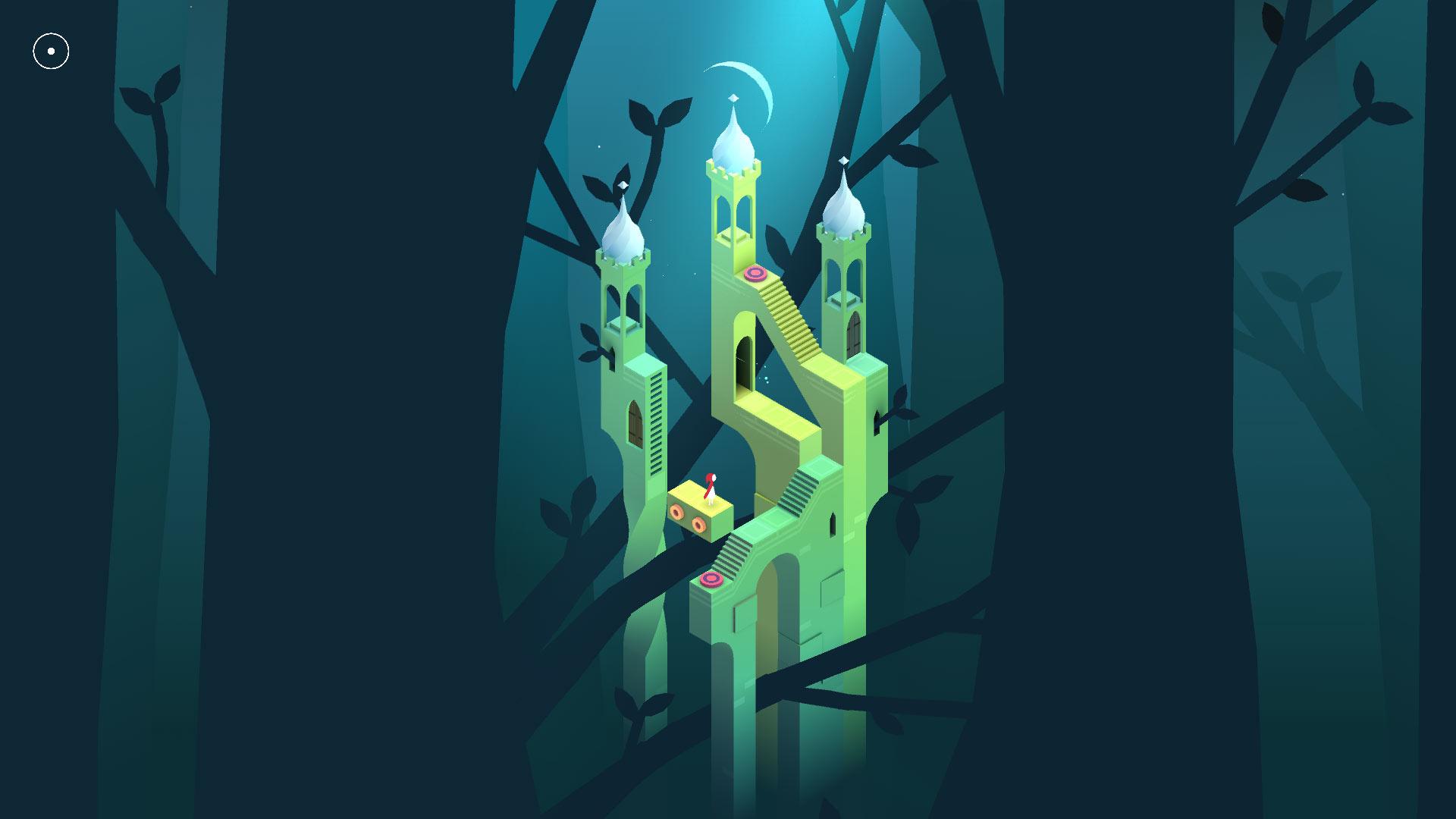
My knowledge of Monument Valley (the place) is limited to the Cars franchise, so I knew I had to play it! It is a visually stunning puzzle game developed by ustwo games. Released in 2014, the game quickly gained popularity and critical acclaim for its unique blend of breathtaking visuals and mind-bending puzzles. Monument Valley is available on various platforms, including iOS, Android, and Windows.
The target audience for Monument Valley is primarily puzzle enthusiasts, casual gamers, and players seeking a visually captivating experience. Its accessible gameplay mechanics and intuitive controls make it suitable for a wide range of players, from novices to experienced gamers.

As for the formal elements of Monument Valley, the player assumes the role of Princess Ida, guiding her through a series of intricately designed levels. The primary objective is to navigate Princess Ida through the beautifully crafted environments, solving puzzles to progress. An outcome is that successful completion of each level rewards the player with a sense of accomplishment and unlocks subsequent levels. In terms of procedures and rules, players interact with the environment by manipulating architectural elements to create new paths or alter existing ones. The game establishes boundaries through the level design, limiting the player’s movement and requiring them to solve puzzles within specific constraints.
I think that Monument Valley could cater to 2 types of fun, including challenge (the intricate puzzles and optical illusions provide a satisfying challenge for players, rewarding their problem-solving abilities) and discovery (each level presents new mechanics and visual surprises, leading to moments of discovery and delight for players).

Monument Valley employs three core mechanics that shape the overall experience. The first is perspective manipulation: the player can interact with architectural elements, rotating and manipulating them to create new paths or bridge gaps. This mechanic challenges the player’s perception and encourages creative thinking. The second is illusion of depth: the game cleverly employs optical illusions to create a sense of depth and three-dimensionality within its 2D world. This mechanic plays with the player’s expectations and adds an extra layer of complexity to the puzzles. The third is visual cues: Monument Valley effectively utilizes visual cues to guide the player’s attention and indicate possible actions or solutions. These cues help players navigate the levels without relying heavily on textual or verbal instructions.
The dynamics of Monument Valley revolve around the player’s exploration, problem-solving, and immersion within the game’s aesthetic world. The puzzles gradually increase in complexity, providing a sense of progression and keeping players engaged. The interplay between the mechanics and the level design creates a fluid and satisfying gameplay experience.
Monument Valley’s aesthetics are its defining feature. The captivating visuals, inspired by Escher’s artwork, create a dreamlike and surreal atmosphere. The combination of serene colors, minimalist design, and enchanting music immerses players in a tranquil and otherworldly experience. The aesthetics serve as both a backdrop and a driving force behind the gameplay, elevating the overall experience.

While Monument Valley is a remarkable game, a few areas could be improved. One aspect is the relatively short length of the game. Expanding the number of levels or offering additional content could enhance the overall experience and provide players with more value for their investment. Another aspect worth critiquing is the level of challenge. While the puzzles gradually increase in complexity, some players may find the overall difficulty level to be on the easier side. Introducing optional, more challenging levels or providing adjustable difficulty settings could cater to players seeking a greater mental workout. Additionally, although Monument Valley excels in visual storytelling, the narrative itself is relatively minimal. While the focus of the game is on the puzzles and exploration, a deeper and more engaging storyline could further immerse players in the world of Princess Ida, fostering a stronger emotional connection and investment in her journey. In terms of mechanics, while the perspective manipulation mechanic is innovative and engaging, it does have limitations. Some players may desire more opportunities for interaction and manipulation within the environment. Introducing additional mechanics or variations in puzzle-solving approaches could add further depth and variety to the gameplay experience. Last but not least, while the game’s aesthetics are undeniably captivating, there is potential for expanding the visual diversity across levels. Introducing distinct themes, color palettes, or architectural styles could provide a richer and more diverse visual experience, preventing a sense of repetition and enhancing the overall immersion.




